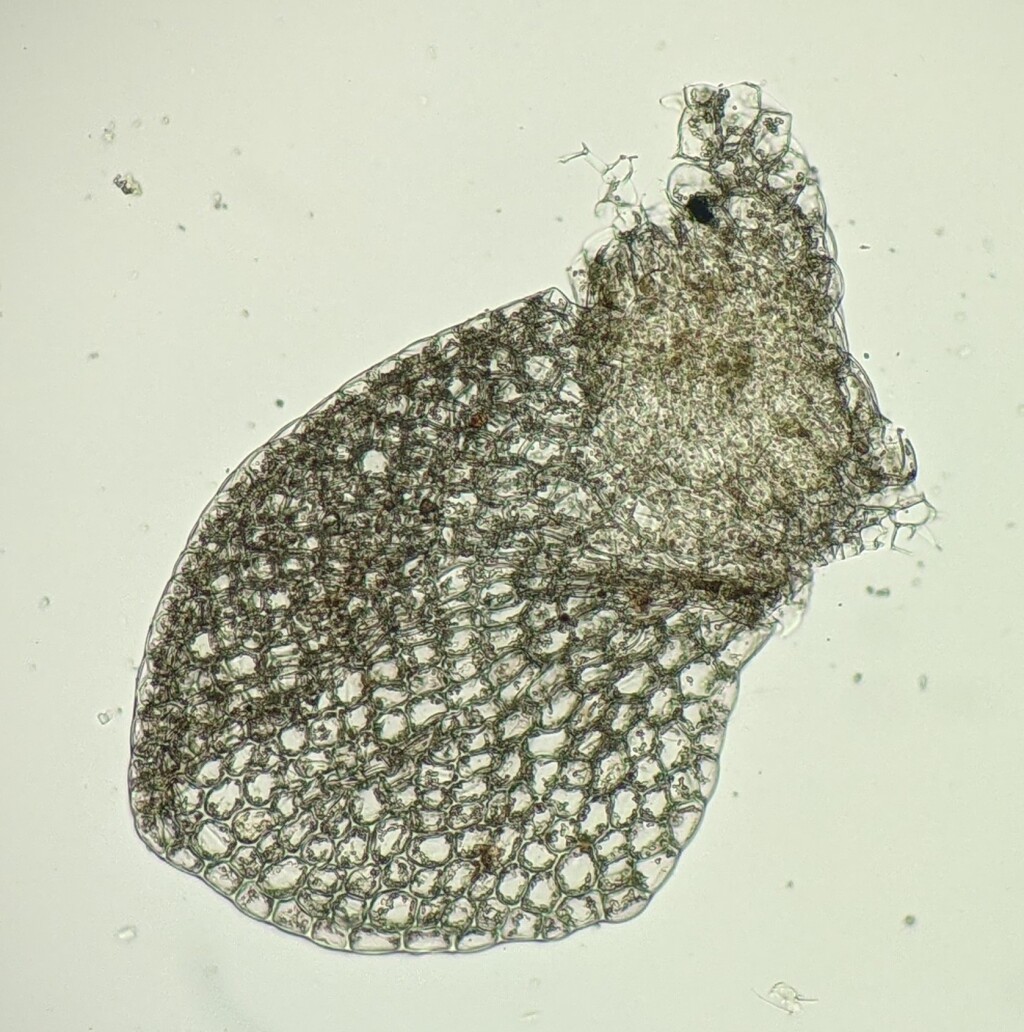Hygrolembidium
Terrestrial, dioecious. Specialised asexual propagules absent. Stems differentiated into creeping axes without leaves or with highly reduced leaves and frequently branched, and erect branches with normal leaves, branching near base, with two ranks of lateral leaves and a single rank of underleaves; branches emerging from stems from axils of unmodified lateral leaf or underleaf and with a collar of tissue at base. Lateral leaves broadly ovate to orbicular, entire or retuse (not in Victoria) at apex, rounded, transverse to incubous, imbricate, erect-spreading, strongly concave, collectively green, 2–7-stratose at base. Underleaves much smaller than lateral leaves to subequal (not in Victoria) to lateral leaves, ovate to orbicular, entire or retuse (not in Victoria), contiguous to imbricate, concave. Leaf cells rectangular, elongate polygonal or irregular, often becoming quadrate or polygonal toward apex, smooth or faintly papillose, particularly toward apex, thin-walled, without trigones, without (not in Victoria) or with 1–9 spherical to ovoid botryoidal oil bodies. Rhizoids in fascicles, usually confined to creeping stems, occasionally on erect leafy stems, arising from underleaf or lateral leaf bases. Androecia forming short branches arising from lateral or abaxial stem, with leaf-like bracts, each with 1–4 antheridia. Sporophyte at apex of short branch arising from lateral or abaxial stem, associated with several series of leaf-like bracts. Perianth oblong to cylindric, terete at base becoming trigonous toward mouth; mouth crenulate to weakly lobulate. Capsule ovoid to ellipsoid, 3–5-stratose; elaters bispiral. Spores spherical, vermiculate, red- to yellow- (not in Victoria) brown.
Eight species, most diverse in New Zealand where four species occur, but also in Malesia, the Andes, southern South America, subantarctic islands and the Antarctic Peninsula (Schuster & Engel 1987); one species, H. acrocladum (Berggr.) R.M.Schust., in Victoria.
Schuster, R.M. & Engel, J.J. (1987). A monograph of Lepidoziaceae subfam. Lembidioideae (Hepaticae). Journal of the Hattori Botanical Laboratory 63: 247–350.
 Spinning
Spinning